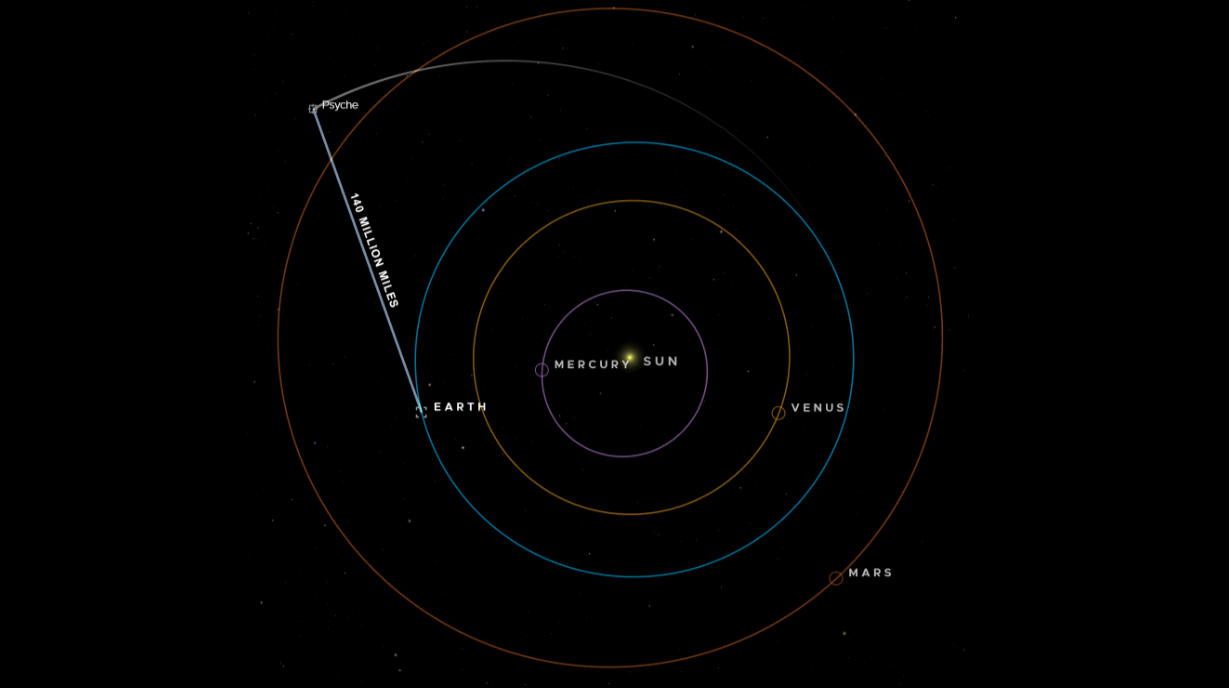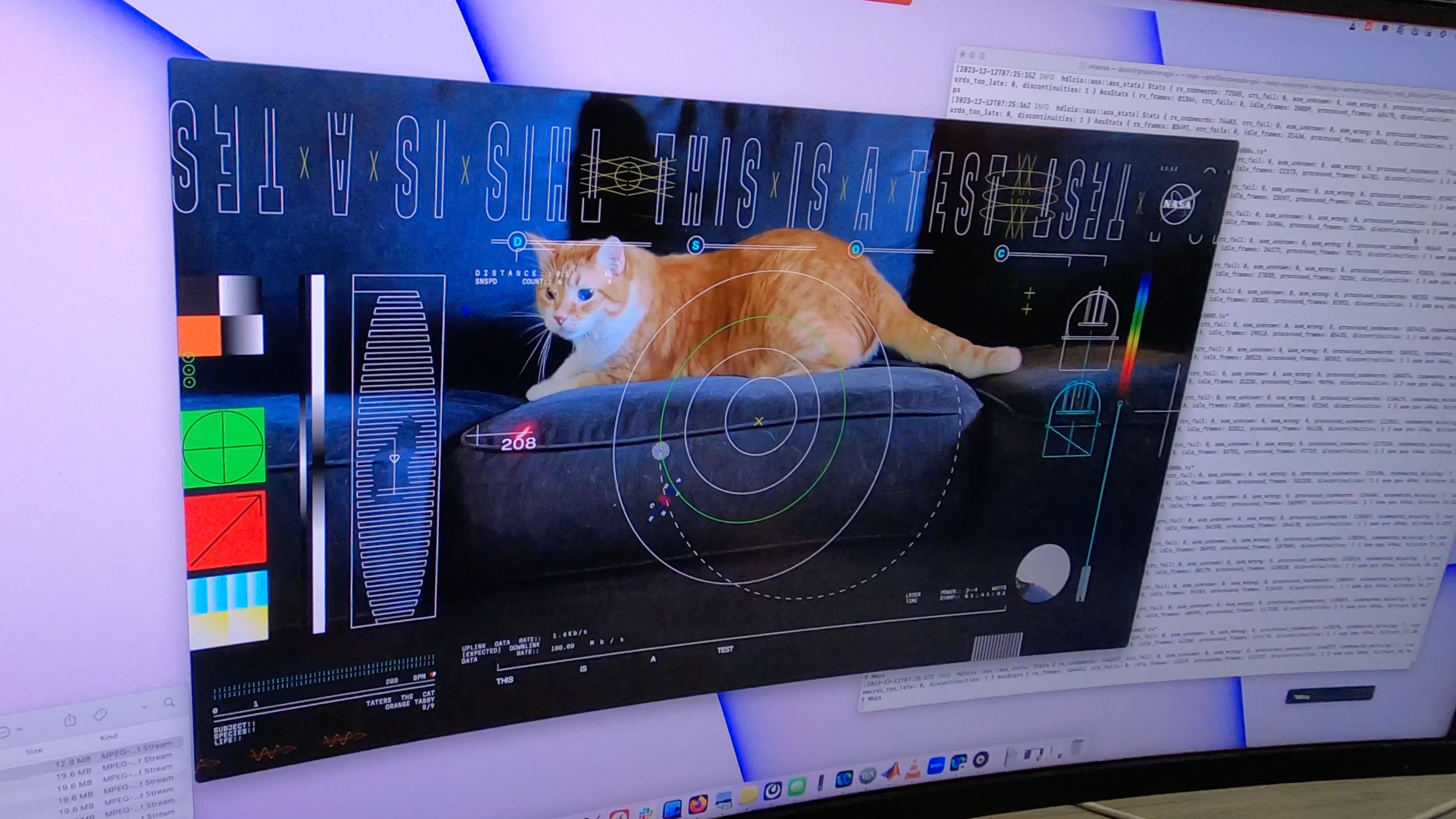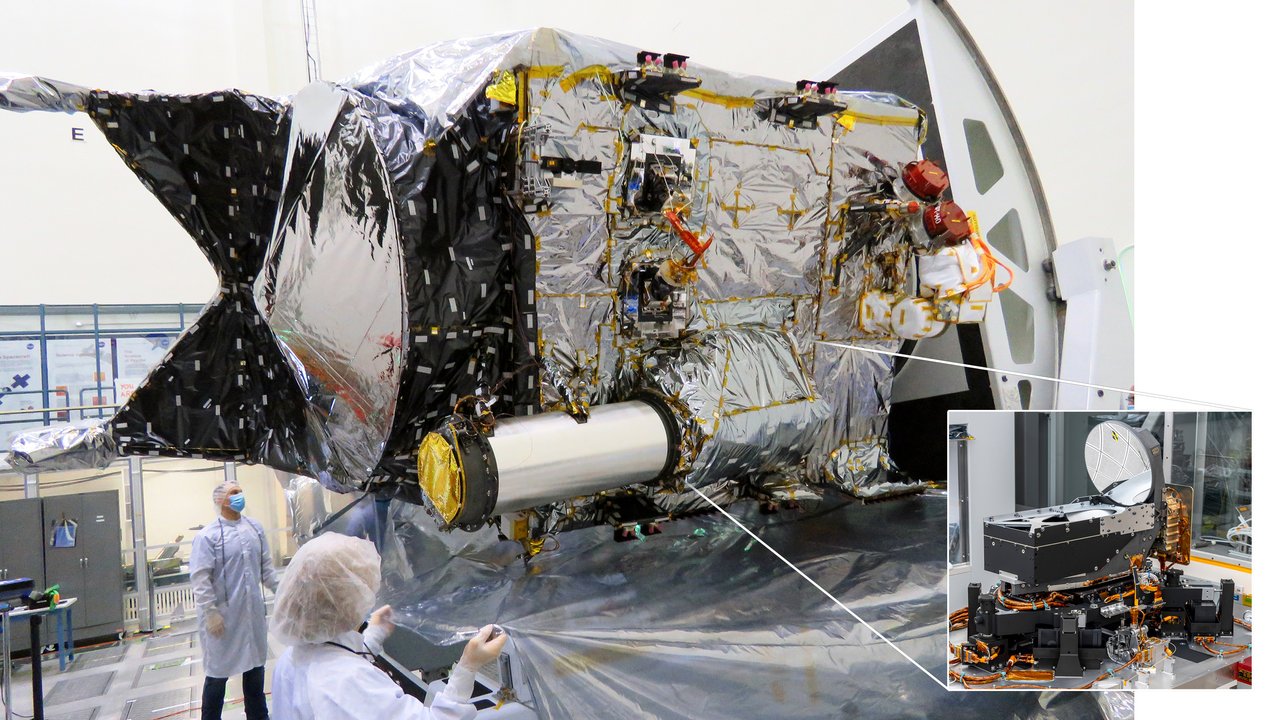
Late last year, NASA scientists pressed start on a highly anticipated space mission. Basically, they launched a spacecraft toward an asteroid that could very well be made entirely of metal, a composition that appears to be a rarity — at least, in our solar system's vicinity. The robotic adventurer is called Psyche, and its namesake is the giant rock that guides its journey: 16 Psyche.
However, Psyche has a side quest, too: Laser communications.
Aboard Psyche, among its asteroid-studying equipment, there is a technology demonstration called the Deep Space Optical Communications, or DSOC. DSOC aims to show that it's possible for laser communications to be conducted across cosmic distances, allowing for high-bandwidth, much faster connection between humans and the probes they send to the final frontier. To be precise, the communication rates are meant to be between 10 and 100 times faster than what we're working with now. And strikingly, on April 8, it would appear that DSOC hit some milestones.
Not only did it transmit data to Earth from Psyche's location at the time, about 140 million miles (225 million kilometers) away — a record-breaking distance larger than the gap between our planet and the sun — but it also managed to beam back information gleaned straight from the spacecraft. This means that the DSOC transceiver actually interfaced with Psyche's radio transmitter and sent back concrete engineering data contained within the craft.
Related: NASA's Psyche metal asteroid mission will have a big impact on astronomy. Here's how
"We downlinked about 10 minutes of duplicated spacecraft data during a pass on April 8," Meera Srinivasan, the project's operations lead at NASA’s Jet Propulsion Laboratory (JPL) in Southern California, said in a statement. It was "duplicated" data that got downlinked, because the "original" Psyche data, if you will, went to ground control through standard radio-frequency communications channels on NASA's Deep Space Network (DSN). Scientists only wished to see if laser comms could work just as well, if not better.
Still, this duplicated-data achievement, in itself, is a big deal for the experiment; though DSOC has been making headlines lately for various other milestones, there's been a caveat. For instance, in November of last year when it fired data back to Earth from 10 million miles (16 million km) away, and recently during a "turnaround test" in which scientists pinged the experiment with content, then got that content to be pinged back, DSOC wasn't beaming back any "real" information. It was pre-loaded test data that could be pulled out on command.
"We'd been sending test and diagnostic data in our downlinks from Psyche," Srinivasan said. "This represents a significant milestone for the project by showing how optical communications can interface with a spacecraft’s radio frequency comms system."
And now, if you're wondering about how the rate tests are going for DSOC, we'll have to get into the cat video.

The cat video
Recall how all previous DSOC data was test information created by the team's scientists. Well, scientists are only human, after all.
In December of last year, DSOC hit a couple of other checkpoints while getting flung toward Psyche's destination. First of all, it beamed data back from 19 million miles (31 million km) away (which I suppose doesn't sound like much against today's 140-million-mile journey, but it was huge at the time). Second, the info it beamed back traveled at the system's maximum rate of 267 megabits per second (Mbps) and thus took something like 101 seconds to each Earth. This, NASA explains, is equivalent to broadband internet download speeds.
And third, one part of the data was a stunning video of Taters. Who is Taters, you ask? Well, a sweet little orange Tabby cat, of course. (It would be an orange cat, wouldn't it?) This is also probably a good time to mention some of that recent "turnaround test" data involved pet pics as well.
During the April 8 test, however, DSOC didn't max out its data transmission rates like it did for Taters' video. The message arrived at DSOC's primary downlink ground station at Caltech’s Palomar Observatory in San Diego County, traveling at a maximum rate of 25 Mbps, NASA writes in the statement — though emphasizing how even that level far surpasses the project's goal of at least 1 Mbps at this kind of distance.
One issue that seems to have arisen for the team is the fact that, to work well, DSOC requires that Mother Nature cooperates. DSN communication, on the other hand, isn't quite dependent on the weather. "We've learned a great deal about how far we can push the system when we do have clear skies, although storms have interrupted operations at both Table Mountain and Palomar on occasion," Ryan Rogalin, the project's receiver electronics lead at JPL, said in the statement.
JPL's Table Mountain Facility is where DSOC's Ground Laser Transmitter instrument is located, and fascinatingly, NASA explains that the laboratory recently attempted to combine that instrument with DSN's optical antenna as well as Palomar's equipment to see if the same signal can be coordinated simultaneously. The goal was to see whether it's possible to toggle between stations if one area is experiencing particularly bad weather, thus forcing some instruments to shut down.

It will be interesting to see how everything shakes out with deep space laser communications in the future, and DSOC does seem to be pointing toward an optimistic outcome. High-speed connection between space explorers and the rest of humanity on Earth would mean clearer cosmic images, a smoother transition for our species as engineers look toward making moves on Mars and just generally more advanced science.
As Ken Andrews, project flight operations lead at JPL, put it: "It was a small amount of data downlinked over a short time frame, but the fact we're doing this now has surpassed all of our expectations."
I mean, at the very least, maybe laser comms will lead us toward getting cute alien pet pics someday?







